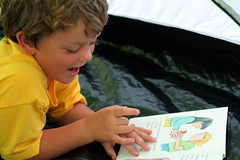 As I reflect over the four+ decades of birthdays, many of which have fallen during Passover, I remember the struggle to find a cake that was Kosher. Back in the late 60's/early 70's there really weren't any flourless cakes, or at least none that tasted like something you would want to eat. My mom, always tried her best though to find something that would be appropriate for a celebration. I suspect there were some that were not celebrated on my actual day so that I could have a proper cake. My mom went to great lengths for me and always has.
As I reflect over the four+ decades of birthdays, many of which have fallen during Passover, I remember the struggle to find a cake that was Kosher. Back in the late 60's/early 70's there really weren't any flourless cakes, or at least none that tasted like something you would want to eat. My mom, always tried her best though to find something that would be appropriate for a celebration. I suspect there were some that were not celebrated on my actual day so that I could have a proper cake. My mom went to great lengths for me and always has.I then started to think about all of this. Almost 43 years ago my mom went into labor, an extraordinarily painful experience. Been there, done that myself. She pushed me out, quicker than my dad expected as the movie he was watching in the waiting room hadn't yet ended. All of this effort on my mom's part, alone except for the doctors and nurses, and only to spend the next 43 years having me aggravate her.
So, what do I want for my birthday? I don't deserve anything but my mom does. I recommend that all cards, e or otherwise, wishes, etc, go to my mom this year. If you're a friend of mine, you can thank her. if you are family, you can ask her why on earth she has put up with me for so long. Or just wish her well, she deserves it.
Thanks, Mom for all that you do and put up with. (Yes, I know I ended with a preposition...)
